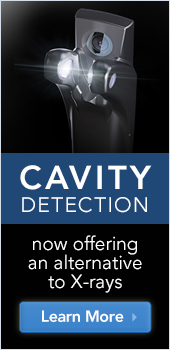Thank you for allowing us to provide you with your dental care. Today you have had a crown preparation procedure. This procedure involves covering part or all of the tooth with a highly durable restoration fabricated by our dental laboratory. Crowns are generally used to treat tooth fractures, large fillings which weaken the tooth, cavities that are too big to treat with fillings, teeth that have had root canals, or otherwise damaged, misshaped or discolored teeth.
The following is a list of some of the things you may experience following today’s appointment:
1. Anesthetic: You most likely were given a local anesthetic to make your tooth comfortable during the procedure. The numbness generally lasts a few hours. During this period, be careful not to bite your lip, cheek or tongue. If possible, stick to liquids or soft foods until the numbness wears off.
2. Discomfort: Some mild to moderate sensitivity of the tooth is normal. Depending on the condition of the tooth, this may last from a few days to several months following the placement of the final crown. The most common sensitivity is to temperature extremes and biting pressure. Unless prohibited by a medical condition, aspirin or ibuprofen is usually sufficient to relieve this discomfort. You may experience some soreness in the jaw muscles or joint from holding your mouth open for an extended period. This may result in difficulty or pain upon opening your mouth wide. Typically this will diminish within a few days.
3. Temporary: Your mouth may take some time getting used to your new temporary crown. This could be due to the difference in the texture and shape from your original tooth. In most cases, the temporary crown “settles in” after a day or two. In rare instances, you may find that your bite hits the temporary first and the rest of your teeth do not contact each other normally. If you feel that the bite on the new temporary is high, call the office to determine if a minor bite adjustment is necessary. Avoid sticky, chewy, hard or crunchy foods in the area of the temporary crown. They may pull the temporary off or fracture it. When flossing the area, pull the floss straight out the side rather than pulling it back out through the contact. Call our office if you are uncertain how to do this. If your temporary happens to come off, please CALL THE OFFICE IMMEDIATELY. Neighboring teeth may move position causing the final crown not to fit. Make sure to come in to get your new crown as soon as it is ready. The temporary is not designed to be a long-term crown.
Remember:
• Brush gently but thoroughly around your temporary crown.
• Do floss, but pull it straight out from the side.
• Avoid sticky, chewy, hard or crunchy food.
• If your temporary comes off, call the office.
• Make sure to keep your scheduled appointment to put in the final crown.
• Expect some mild to moderate tooth and/or jaw discomfort.
• PLEASE CALL THE OFFICE IF YOU HAVE ANY QUESTIONS OR CONCERNS ABOUT YOUR TREATMENT. We are always just a phone call away at 310-828-4451.




